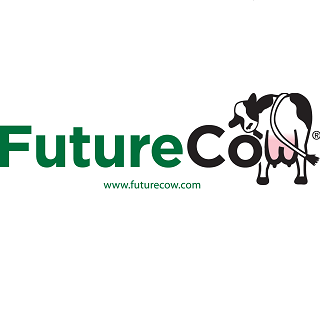Dairy in the World
Rearing Dairy Heifers: You can't manage what you don't measure

The effects of current calf health and rearing practices on future herd performance have been greatly underestimated. A recent survey evaluating whole-farm feed efficiency (WFFE) on UK dairy farms identified significant gaps in the knowledge of youngstock management due to many farms not recording heifer data. Researchers at the University of Nottingham are aiming to fill some of these gaps and develop a greater insight to how heifer rearing can improve WFFE.
It is essential to calculate WFFE, which describes the ratio of milk output to feed input, because feed expenses represent 70% of milk production costs, followed by rearing costs as the second largest overhead. Unfortunately, feed efficiencies are normally only considered for the milking cows in a herd. Therefore, any improvements gained in these cows may be offset by inefficiencies in other animals on the farm such as: bull calves, dry cows, and replacement heifers. This may influence overall feed use and farm profitability. Factors related to heifer rearing that are recognised as important drivers in WFFE include: calfhood morbidity and mortality, heifer nutrition and growth, age and live weight at first calving (FC), and replacement rate.
Recent work at Nottingham has focused on the effects of calfhood bovine respiratory disease (BRD) on achieving rearing targets. Data was collected from 335 Holstein-Friesian heifers which had first calved between 2016 and 2019. Accurately recording calf disease can be difficult due to the subjectivity of diagnosing ill health and the variation in defining a morbidity event. In this study, BRD was visually diagnosed and defined by the number of antibiotic treatments administered. This study highlighted that clear guidelines to assessing and defining calf health is critical for consistent diagnosis of disease, especially on farms where different farmworkers may administer treatment. Additionally, better indicators of ill health may help in diagnosing disease sooner and administering appropriate treatment to reduce antibiotic usage.
Current results show that heifers which are repeatedly treated (≥4) for BRD in the rearing period reach fertility, maturity and calving targets later, adding to milk production costs. These heifers calved 24 days later than their herd mates who required no treatment (771 vs 747 days respectively). This difference in age at FC (AFC) may appear small, but it masks a lost opportunity for potential improvements in margins as delayed entry into the milking herd reduces subsequent milk production, and lengthens return time since it takes on average 1.5 lactations for a heifer to repay her rearing costs. Furthermore, previous research has estimated that this cost can be increased further when heifers calve later than the long-standing recommendation of 730 days, as an additional daily cost is incurred for every extra day over this target.
Lastly, the later a heifer calves, the more feed she will consume in the rearing period and so the more greenhouse gases she will emit prior to milk production. This in turn increases the carbon footprint of the whole herd. However, in this study, only 36% of heifers achieved the current AFC target. This is reflective of other UK farms and raises the questions: why are so many heifers not achieving this target? Is it a matter of fertility, or a farmer’s choice to delay AFC?
Alternative targets, based on mature weight (MW) rather than age, have been recommended recently. These targets are 55% of MW at first breeding and 85% of MW at FC. In this study, heifers treated at least 4 times for BRD took longer to achieve these MW targets because they grew slower and took longer to conceive. Reviewing historic farm data showed that mean live weight at FC has continued to increase, from 522 kg in 2007 to 645 kg in 2017. This is consistent with increased milk yields, supporting that MW is more important than AFC for greater economical and productivity gains. Further work could explore producing specific rearing targets based on individual herds which may be more achievable.
Refinements in these rearing factors could contribute towards achieving better margins, as well as increasing the lifetime productivity and herd longevity of heifers, which will produce more efficient and cost-effective herds and substantially lower the carbon footprint of dairy production.
For more information please contact PhD student Lucy Ross (lucy.ross@nottingham.ac.uk) or supervisors Jean Margerison (jean.margerison@nottingham.ac.uk) and Phil Garnsworthy (phil.garnsworthy@nottingham.ac.uk).
Lucy Ross is a third year PhD student at the University of Nottingham, researching heifer rearing and whole-farm feed efficiency in UK dairy systems in partnership with AHDB.
TheCattleSite News Desk






















